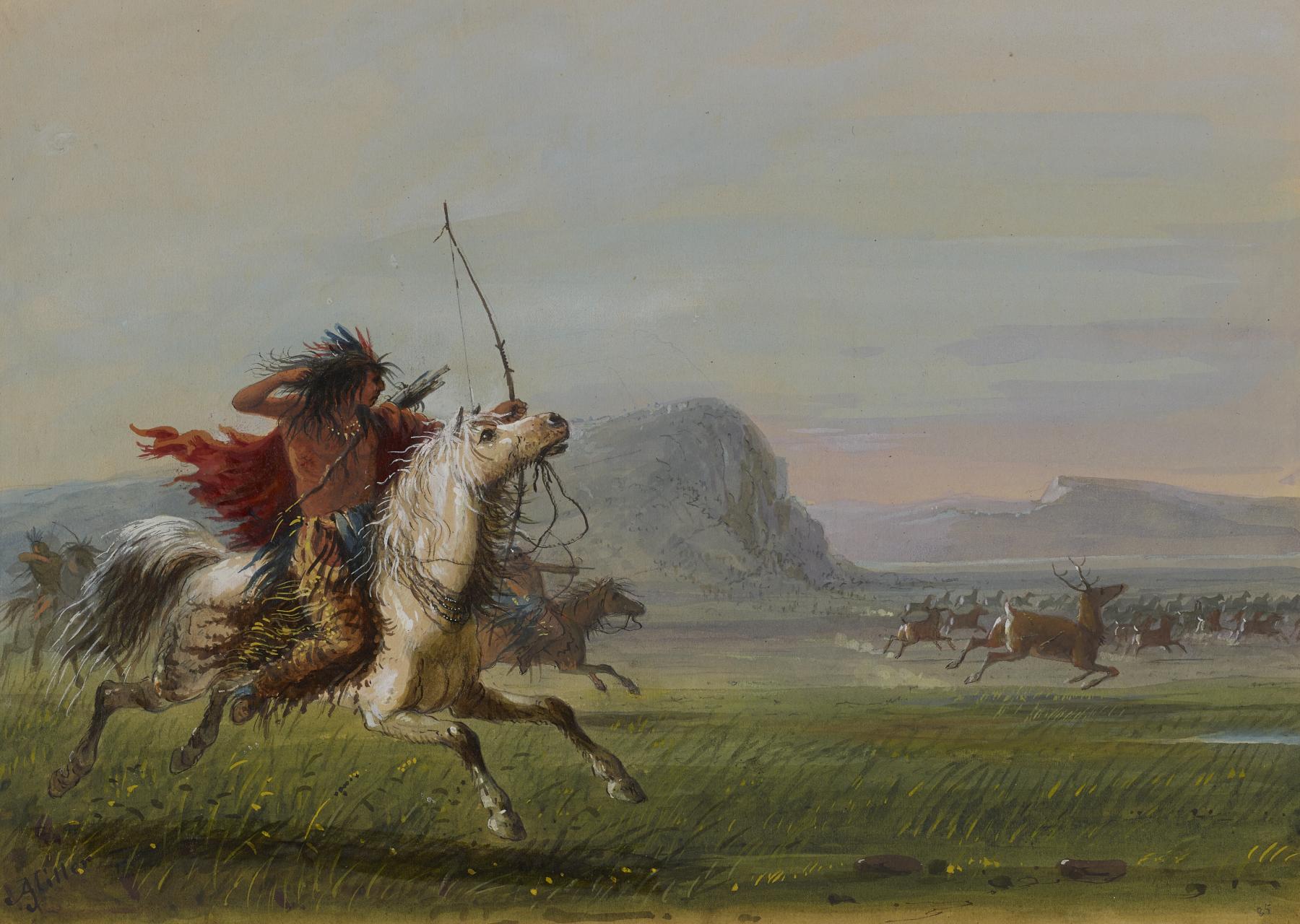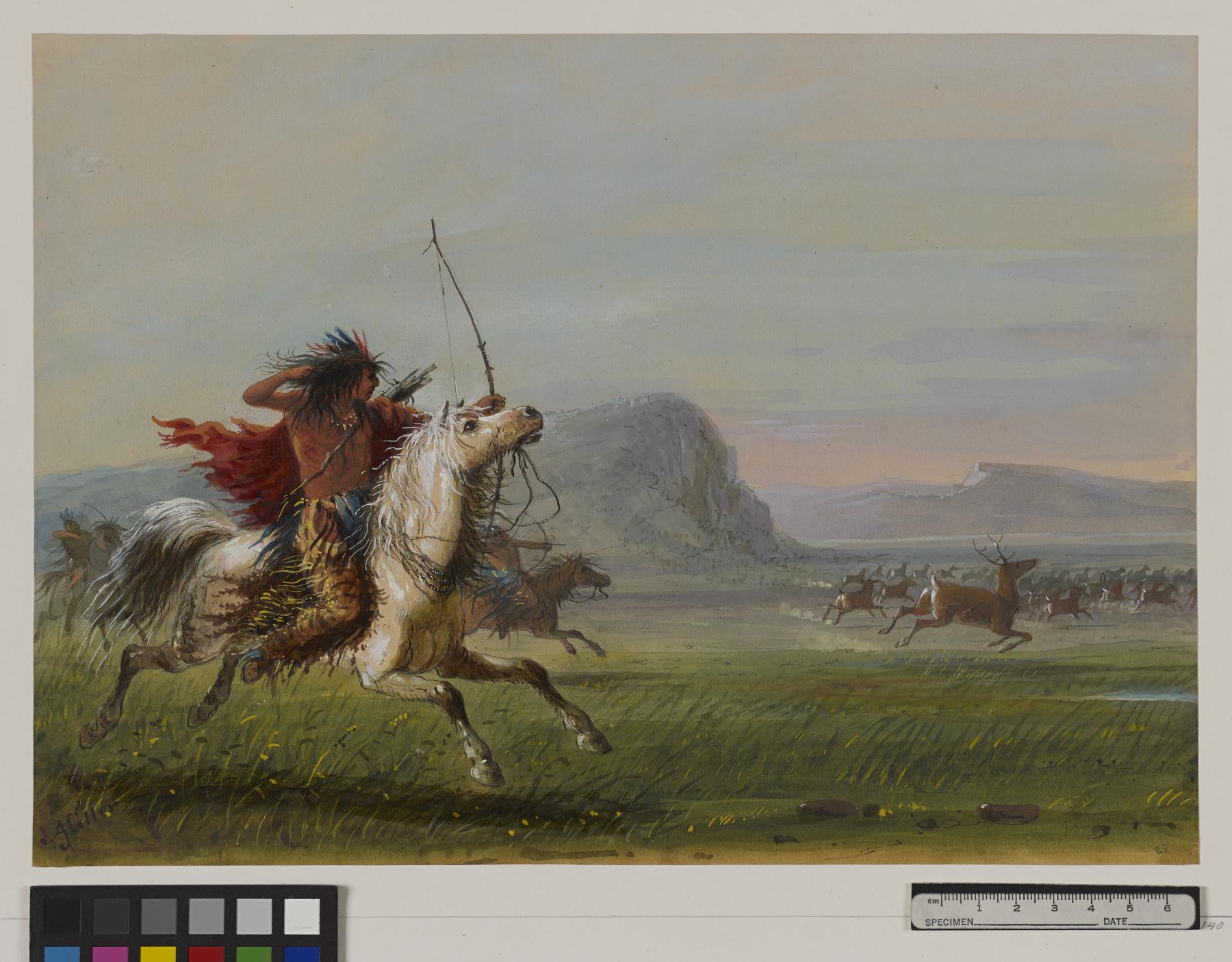Hunting Elk
(18th and 19th Centuries )
Extracts from Alfred Jacob Miller’s original text, which accompanied his images of Native Americans, are included below for reference.
"The man who here deliberates is lost: i.e., loses his shot;- there is not much use in running the Elk without stratagem is used, either in heading them off, forcing them into the river, or waiting at some point hidden, and shooting them as they pass. Their speed outstrips that of the horse. When Buffalo are scarce, these are a desirable acquisition to the prairie larder, more from their weight than excellence of food. The meat is inferior to either Buffalo, Bear, Mountain Sheep, or Deer. The Indians manufacture a beautiful buckskin from their hides, very soft and strong, with which they make leggings, giving it a rich tint by a peculiar process of smoking;- they form it also sacks to carry their pemmican and jerked meat, and from the horns they make their most efficient bows. The scene represented in the sketch is near a bluff in the vicinity of the upper waters of the Nebraska River. The herds of Elk rarely number more than 4 or 500." A.J. Miller, extracted from "The West of Alfred Jacob Miller" (1837).
In July 1858 William T. Walters commissioned 200 watercolors at twelve dollars apiece from Baltimore born artist Alfred Jacob Miller. These paintings were each accompanied by a descriptive text, and were delivered in installments over the next twenty-one months and ultimately were bound in three albums. Transcriptions of field-sketches drawn during the 1837 expedition that Miller had undertaken to the annual fur-trader's rendezvous in the Green River Valley (in what is now western Wyoming), these watercolors are a unique record of the closing years of the western fur trade.
Inscription
Provenance
Provenance (from the French provenir, 'to come from/forth') is the chronology of the ownership, custody, or location of a historical object. Learn more about provenance at the Walters.
William T. Walters, Baltimore, 1858-1860, by commission; Henry Walters, Baltimore, 1894, by inheritance; Walters Art Museum, 1931, by bequest.
Geographies
USA (Place of Origin)
Measurements
H: 8 13/16 x W: 12 5/16 in. (22.4 x 31.3 cm)
Credit Line
Commissioned by William T. Walters, 1858-1860
Location in Museum
Not on view
Accession Number
In libraries, galleries, museums, and archives, an accession number is a unique identifier assigned to each object in the collection.
In libraries, galleries, museums, and archives, an accession number is a unique identifier assigned to each object in the collection.
37.1940.140







